
In-SEPP-tion Part III: What is Sepp Riding?
Sepp Kuss’s path to the top was unconventional compared to most ‘roadies’ racing today. He raced mountain bikes through high school and college before going through a whirlwind couple of years to reach Grand Tour glory. Making your way to the top of any sport takes incredible perseverance, talent and even a fair amount of luck. Unfortunately, sometimes the difference between making it as a pro and being a top amateur racer can come down to something as trivial as the right bike setup. Every pro has to go through meticulous trial and error to figure out what works for them.
Throughout Sepp’s years in the peloton, he has dialed in his bike to maximize performance and minimize the risk of mechanicals. Ryan and I quizzed Kuss, who is sponsored by Cervelo and SRAM, about what exactly he rides. While he is limited to the products of his sponsors, Kuss still hones in on what works best for him. Plus, riders have been known to have some leeway when it comes to selecting parts, with many riders riding unlabeled components to meet specific needs.

WHAT DOES SEPP USE?
Q: You are lucky enough to be on a team equipped by Cervelo, one of the few brands that still make two separate race bikes for road racing. Still, you seem to choose to ride the R5 much more than the S5, even on flatter stages when the S5 might make more sense, what is the logic behind that choice?
I like the handling of it. The geometry is optimized for climbing, which is the type of terrain where I need to shine. The S5 is a versatile bike, and it is the fastest bike I’ve ever ridden, but when you know the day is going to be decided on the climb then the R5 has to be the bike bike for me.
The Cervelo R5 is optimized towards climbing, the style of riding where Kuss excels, and where his team needs him to excel. However, we have to assume that there is more to it than just pure climbing ability because teammate Vingegaard, arguably the best climber in the world, rode an S5 in hilly races like the Criterium du Dauphine, and even on a couple of hilly Tour de France stages. Bike positioning and handling is also a big factor, so a more maneuverable and better climbing R5 might be the edge for Sepp over the stability and the aggressive aerodynamics found on the S5.
One reason might be to keep the weight down. At 6ft tall, getting to the 6.8kg weight limit can be a bit more difficult on an aero frame with electronic parts and disc brakes. Kuss may opt for the R5 to save an extra bit of weight, allowing him to "splurge" the extra grams on the exact wheels and groupset he wants. Vingegaard doesn’t have to worry about the weight limit as much, because at 5’9 (and his unlimited resources), getting to the 6.8kg mark is easier. It is worth noting, in Strade Bianche 2024, Sepp did ride a Soloist, not the R5 or S5, an interesting choice as right now Cervelo does not offer the Soloist with their top-end '5' carbon.
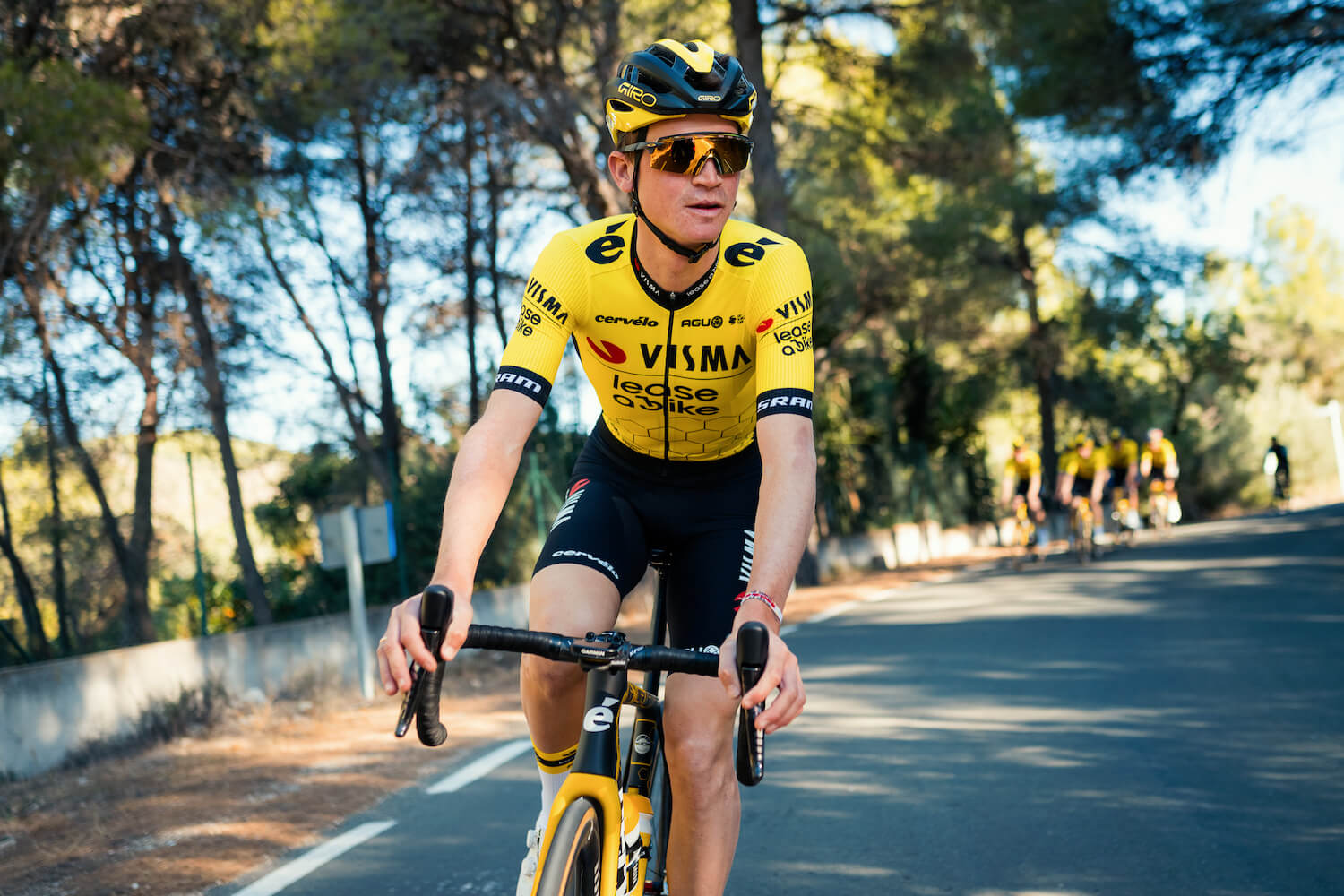
Q: What size R5 do you use? You look pretty bent over on the bike so we want to know if you ride something different to what Cervelo would recommend for your height. At Sepp’s height of 6’ Cervelo recommends either a 56 or 58cm in the R5.
I have been riding a 54. Since it already has a pretty tall head tube, I didn’t want to upgrade to the 56, and the 54 with the long, negative stem puts my weight over the front how I like it.
This has been a trend in the peloton as custom geometry frames faded away. Racers frequently are found riding smaller, and smaller frames usually combined with a long stem. Lately, people have been trying to shorten their wheelbase as much as possible to get the best possible handling, because much like how a slalom ski turns better than a downhill ski, a bike with a shorter wheelbase turns better than one with a longer wheelbase. While sizing down significantly works for professional riders, we do not recommend it for the everyday athlete. The added stability of a longer wheelbase is better for most riders and will keep you more comfortable and in control of your bike.
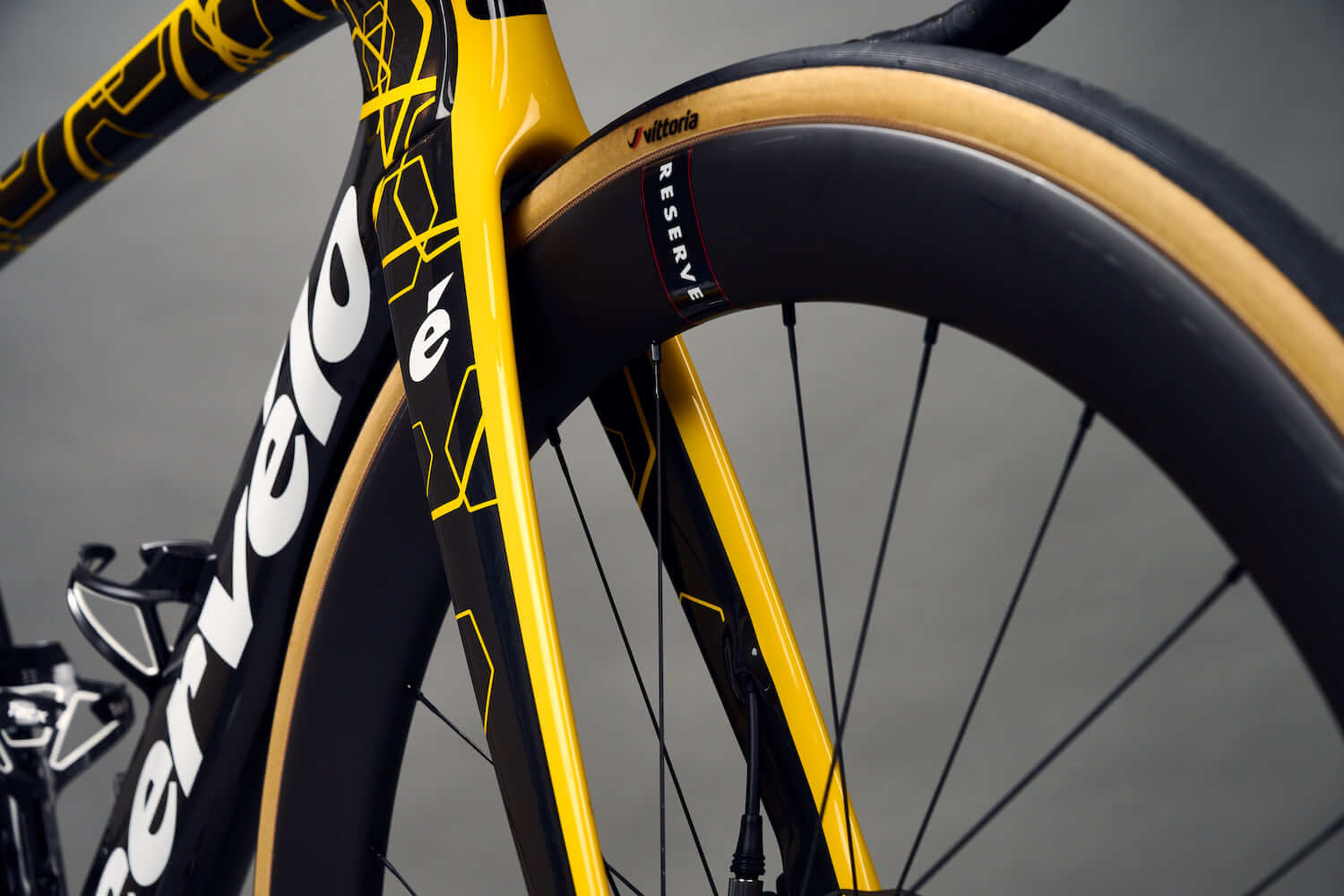
Q: Tubulars have been all the rage for many, many years in the pro peloton. Now are more riders riding tubeless, or is the weight loss from tubulars enough to keep people riding them?
Now we are almost completely riding tubeless. On the R5, for certain stages, we choose tubular to keep the weight as low as possible, but I like the ride feel of the tubeless with wider tires. They’re more secure in the corners and just provide a better overall feel.
Tubeless versus tubes versus tubular is an endless debate in the bike industry. While tubulars have fallen out of favor for most cyclists, it easy to find one rider preaches tubeless and another who disagree saying that tubes are the still better. When it comes down to it, tubeless is slightly lighter than a tube and tire setup, especially for the everyday rider who doesn’t want to spend $30 per tube on Latex tubes. The Reserve wheels Kuss uses utilize a semi-hooked rim design, a mid-way point between hooked and hookless. This allows every tubeless tire to be compatible on the rim, with a slightly higher PSI limit than what would be used on a hookless rim. With this system, Visma-Lease a Bike can give their riders the perfect setup for any day, while optimizing the overall wheel weight.
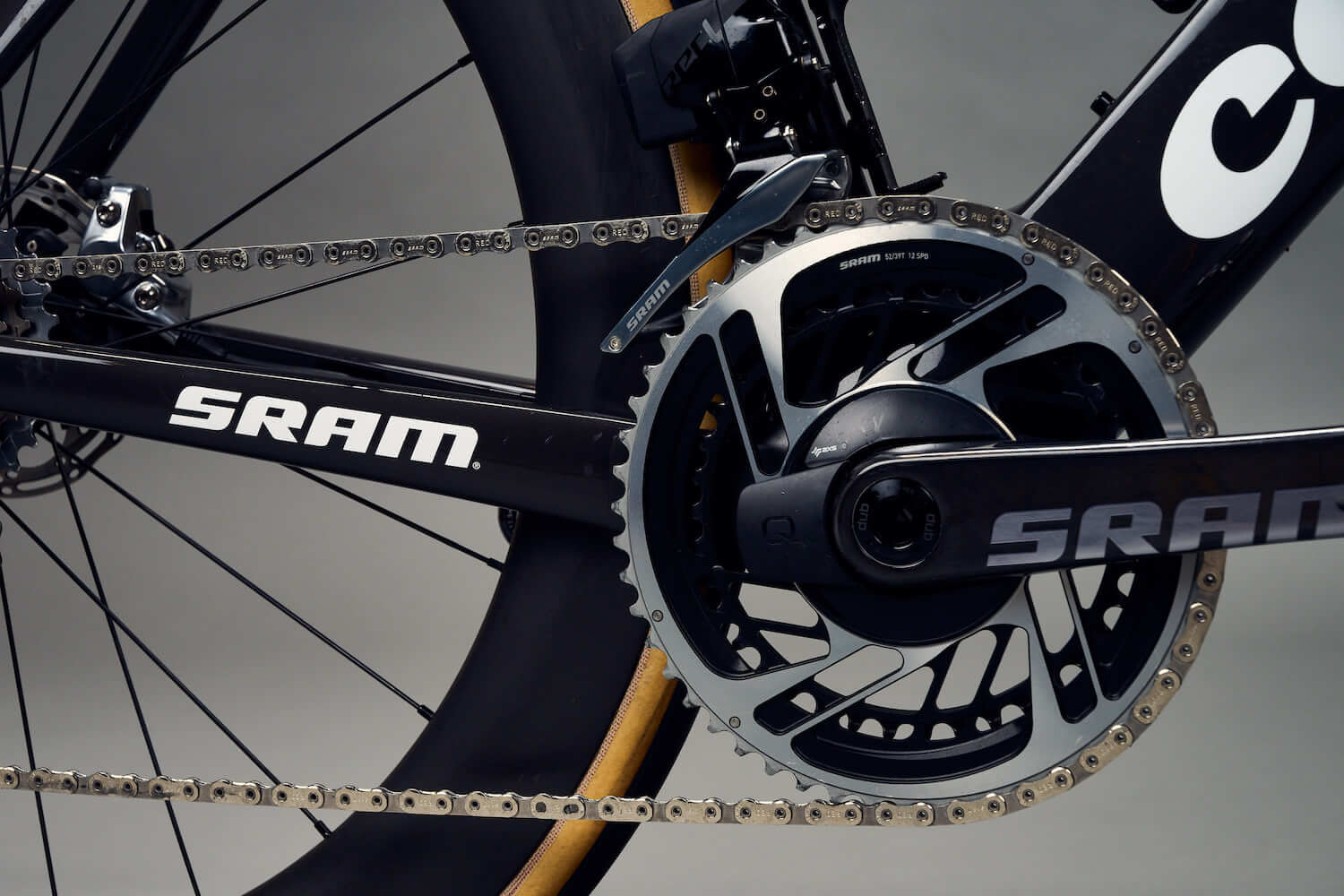
Q: SRAM offers the single chainring (1x) XPLR group for athletes and we’ve seen Roglic and Vingo both use it but you seem to stick to a traditional double road crankset (2x). What’s your opinion on 1x on the road?
I’m all for it. SRAM gives us a ton of options. There are a lot of stages where it is more beneficial to ride 1x, as it is simple and more secure. For example in the classics you want to run 1x to minimize your risk of chain drops over the rough cobblestone roads.
It depends fully on the terrain, but it is nice to have everything at your disposal. The gear ratios on the XPLR cassette are perfect for the crazy steep mountain climbs, they give you enough that you're never over-geared, but do not have too big a jump in the gearing. I think the 1x XPLR is really good for steep mountain days.
1x is a relatively new thing for road bikes but is something at home on gravel bikes. While we might not recommend XPLR to be a go-to road groupset, XPLR 1x does have a place in racing. Many people in the American criterium scene have transitioned to running 1x as their events do not require a gear low enough to require a small chainring. And as Sepp said, it is more secure and safer without a front derailleur. On the gravel we have also fallen in love with 1x as we have seen it take over the Lifetime Grand Prix series, with only a few racers opting for a front derailleur. A big reason is the added consistency of 1x over 2x, but another factor is that front derailleurs can encroach on tire clearance and get compromised in the mud.
The main downside of a 1x is the gap between gears on the cassette. SRAM wanted to fix that problem with XPLR, so they built a cassette that will feel like a road cassette but gives the option to pedal up any incline. With the 10-44t cassette, XPLR is basically a 10-speed 10-32 cassette with two additional bailout gears. For someone building up a bike to go check off the bucket list of the climbs in Europe, XPLR could be perfect as it has really low gear range and is lighter than your regular road setup.
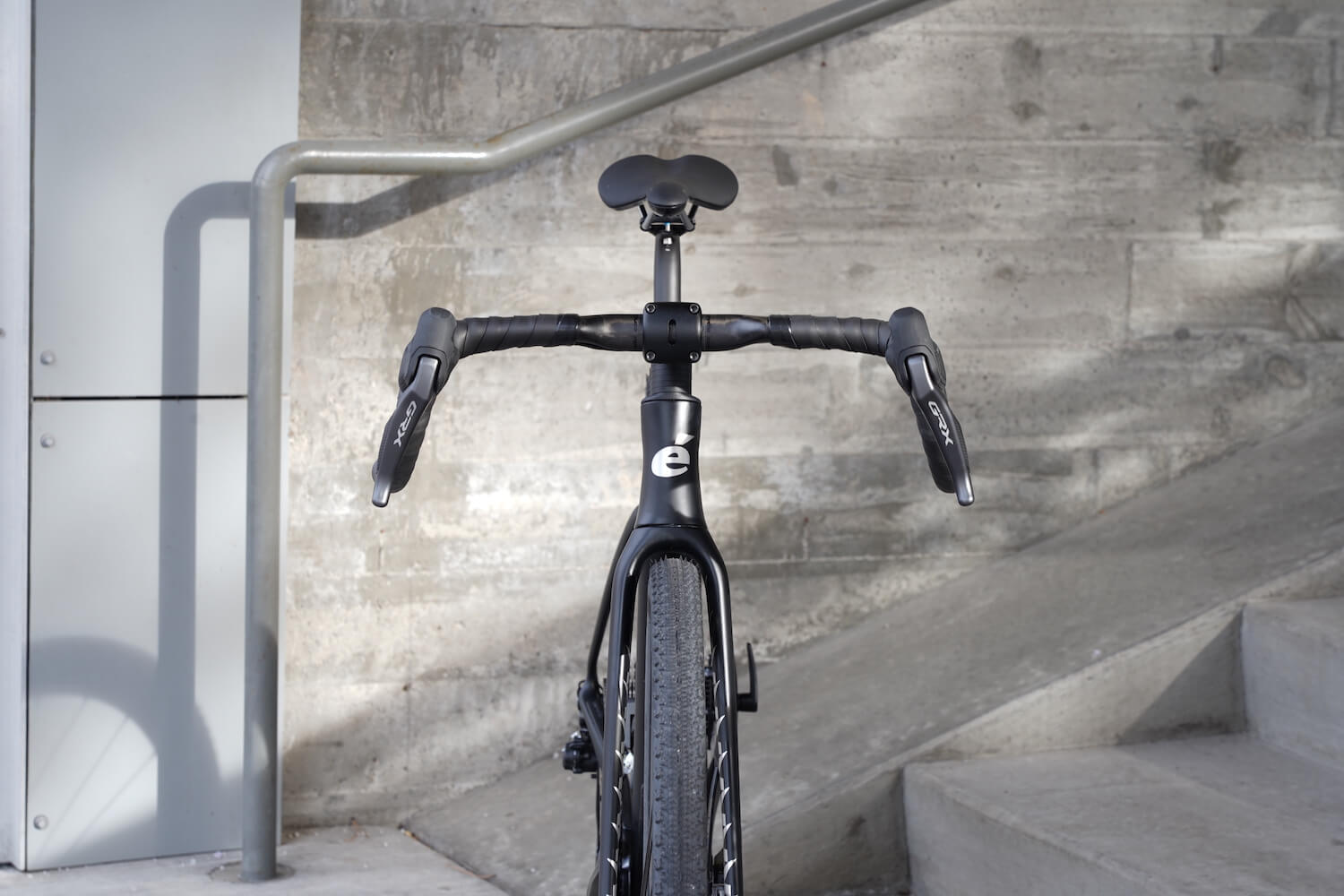
Q: What about flared bars and shorter cranks, many athletes seem to be running them.
I don’t really have an opinion, I am pretty generic when it comes to bike setup. If other riders like it, that is their decision, just not for me. Vision is setting me up a custom one-piece handlebar, but I want no flare and standard drops, nothing too fancy.
Bike setup is personal to each rider, so trying to find what works best for each rider is an easy way to unlock some extra speed for each ride. More and more we are seeing narrow bars with flared drops and shorter crank arms encouraging riders to ride at a high cadence. Remco Evenepoel has even gone to a 165mm crank arm, which even three years ago would have been a stake through the heart of purists. They seem to work for him. As the UCI has cracked down on how "turned in" the riders can run their levers, we will not be seeing the crazy, aero setups that were common last year. For the rest of us, we can experiment in the absence of UCI officials at each of our rides and events.
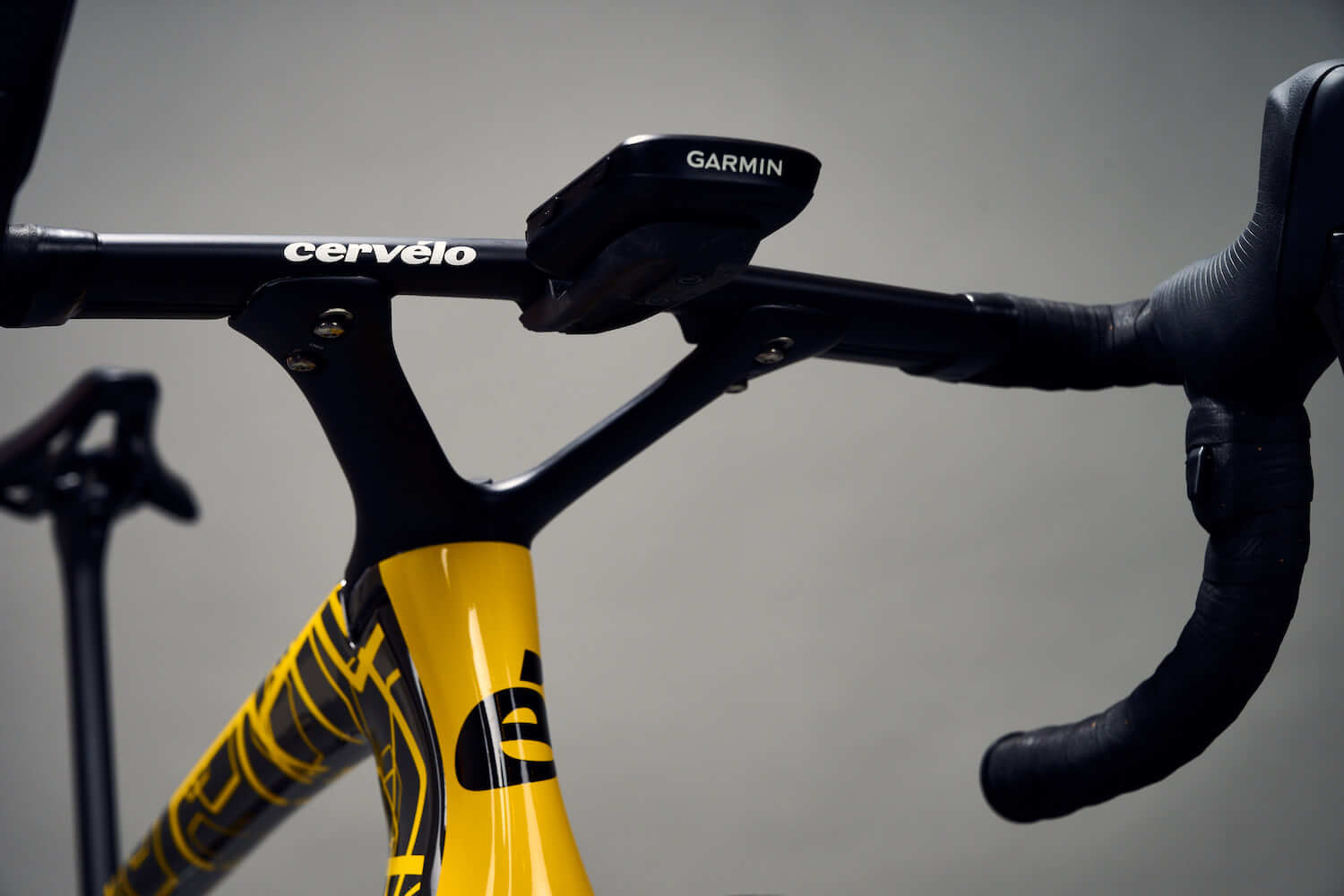
Q: What is your Garmin bike computer of choice?
I normally run the 840 because I like to have an overview of the stage on the screen. Having the map with Climb Pro on the big display is best for me on the mountain stages. For a time trial, I might run the 130 for something smaller and lighter, but for the road stages I need more information, and the 840 is best for me.
While riding with a computer isn’t necessary, picking the right one can assist cyclists in training, route planning, or just providing information they did not have before. The Garmin line has many options, so finding the right one can be tricky. They have expanded their current range to include a solar feature that passively charges the device during the ride. While the Solar power won’t overcome the power loss during standard use on a Garmin, it does do enough to extend its battery life to over ten hours on each model. While some of them cost as much as an iPhone, there are many options that cater to what each rider needs, especially at more affordable prices.

Q: We love Oakley’s here at the shop. Personally, they’re my favorite sunglass brand, so being one of their riders what is your favorite style and lens?
I like the Encoders with the red trail lenses. When you are going in and out of shadows, or the weather is changing, you always have good coverage and good vision. They’re usually my go-to for race days.
Finding a favorite pair of sunglasses is paramount. Cyclists can easily get by with one or two pairs (and this comes from a guy who has a sunglasses problem). Oakley's PRIZM Trail lenses, those used by Sepp, have been my long-term favorite. Many brands offer a similar technology, such as Smith's Chromapop, offering comparable performance. I have had a pair of Oakley Sutros with this lens since 2021. For those who might say that I am bandwagoning on what Kuss uses, last spring I took a deep dive with my guide to all things sunglasses.

THE FINAL QUESTIONS
At this point, we had a few minutes left in the interview, so while we had a stack of questions still to ask, we couldn’t fit in everything we wanted. Sepp has been a big advocate for getting kids out on bikes, whether it be for racing or just for pleasure. We wanted to know what advice Kuss could pass on to kids getting into the sport through the NICA system, and just falling in love with biking through riding.
Just keep it fun and find what you’re asking within cycling. You can ride with your friends, or you can go on your own to find freedom in your day, just find out what you love and maximize it. If you like to go on adventures then see what’s the furthest point you can ride to, or just pick out a distant landmark and try to ride to it.
Just keep it fun, and keep it simple, that’ll be how you develop your skills. Make sure to develop your skills before your engine too, focusing on the fundamentals and why you ride before anything else is how you find your lifelong love of the sport.
This is great advice, Whether a rider is a weekend warrior, a kid who wants to go send-it on jumps, a gravity athlete who loves lift service or an E-biker there is a place in the community for everyone. If riders are having fun, they're doing it right!
Sepp told us that he has no doubt in his mind that he will always be an avid rider, and even if he could no longer race. Nothing would stop him from riding every day. That is why we love him so much at Contender because so many racers can only see things from the racer's perspective. A professional athlete who would be willing to give up all the glory in exchange for a lifetime on a bike is refreshing in a sport that is too often focused on speed and performance.
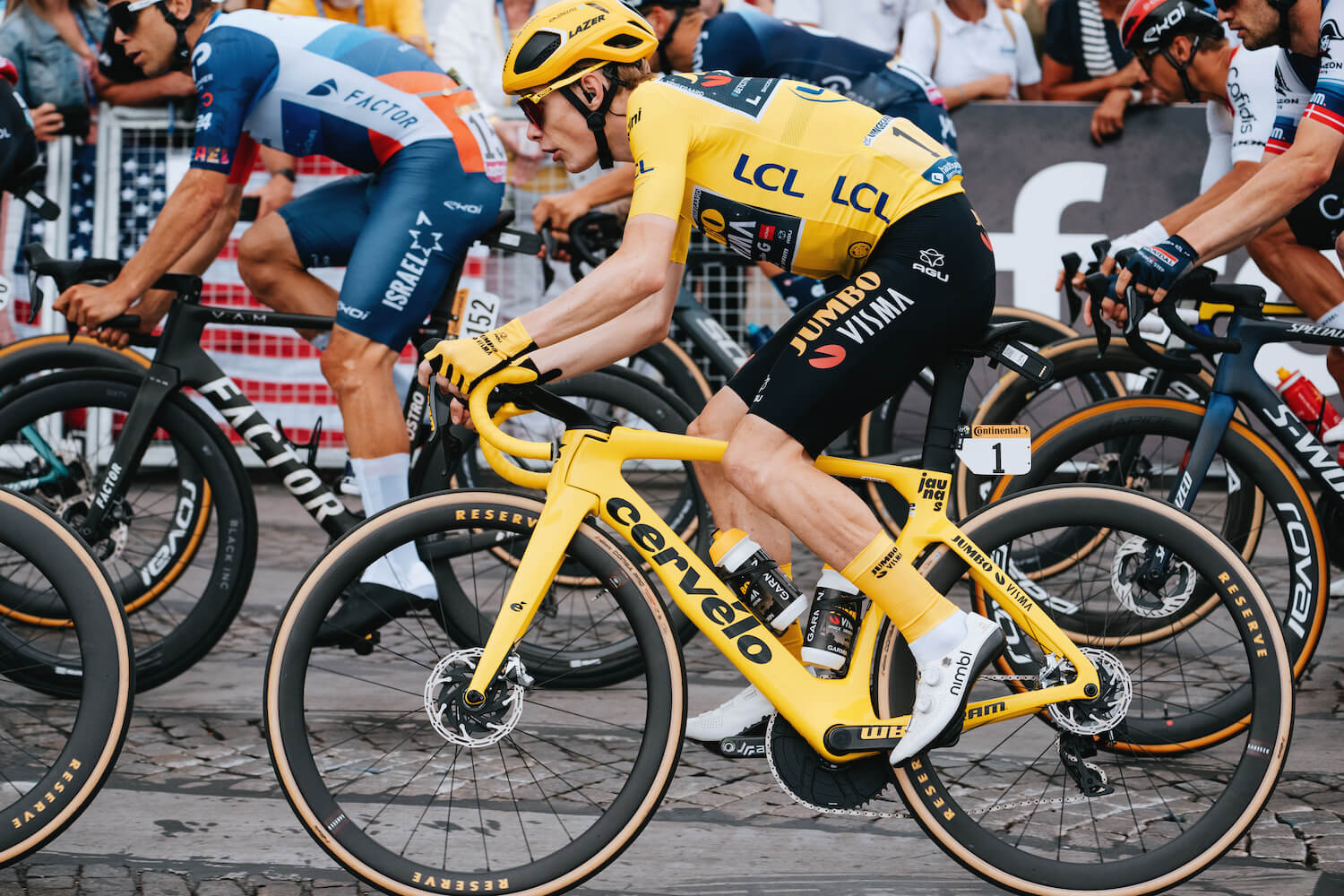
The last question we asked Sepp was about that clip from the last day of the Vuelta where Jonas looked like he couldn’t ride no-handed. If you haven’t seen it, look it up, it is pretty funny to see a Grand Tour rider humbled. After that clip many people were talking about the lack of bike handling skills Vingegaard had so we asked Sepp to clarify.
Yeah, no, Jonas can definitely ride with no hands.
The headset on the S5 can take some getting used to, because it is set up a little tighter than a standard headset, so you have to have weight over the bars for control. He was also running his saddle far forward which would explain it. Even after I saw the video I said, ‘Oh wow, he’s having a tough time.’ But I know that feeling, it has happened to me where all of a sudden you’re riding and think, ‘Okay, I can’t ride this bike.’
That is the thing about aero bikes, they are designed to keep weight over the front end, so when the rider does not have that weight it can get sketchy, no matter how much experience they have. The S5 is clearly a true aero bike, so when the rider is not in an aggressive position the bike often feels unnatural and does not handle as intended.

WRAPPING IT ALL UP
Kuss has made his way from being a kid on a bike in Durango to being one of the best climbers on the World Tour today. Cervelo and Sram have equipped him with the best equipment possible. Whether a cyclist wants exactly what the pros ride, or the more practically minded products in the line-up, it is always possible to find something great to ride.
Cervelo has a wide range of road bikes, for those who do not want the aggressive race bike feel, check out their Caledonia. Built around the climbing pedigree of the R5, the Caledonia offers a higher stack height to make it more comfortable for most riders. There is also the Soloist, a bike that fills the gap between the R5 and S5, which provides a more aero frameset without the hyper-aggression of the S5. At Contender Bicycles, with a lot of cyclists with experience on a wide varietly of Cervelos, we are happy to guide riders through the process of which Cervelo bike might be the perfect fit for them.
Thanks again to Sepp, Cervelo, Team Visma Lease A Bike and everyone else who made this possible. We do not often have the chance to interview a Grand Tour winner, so we hope to have done him and his impressive career justice. We all look forward to watching Sepp throughout the rest of his career, and maybe we will even see him pull on the Malliot Jaune in July one day.